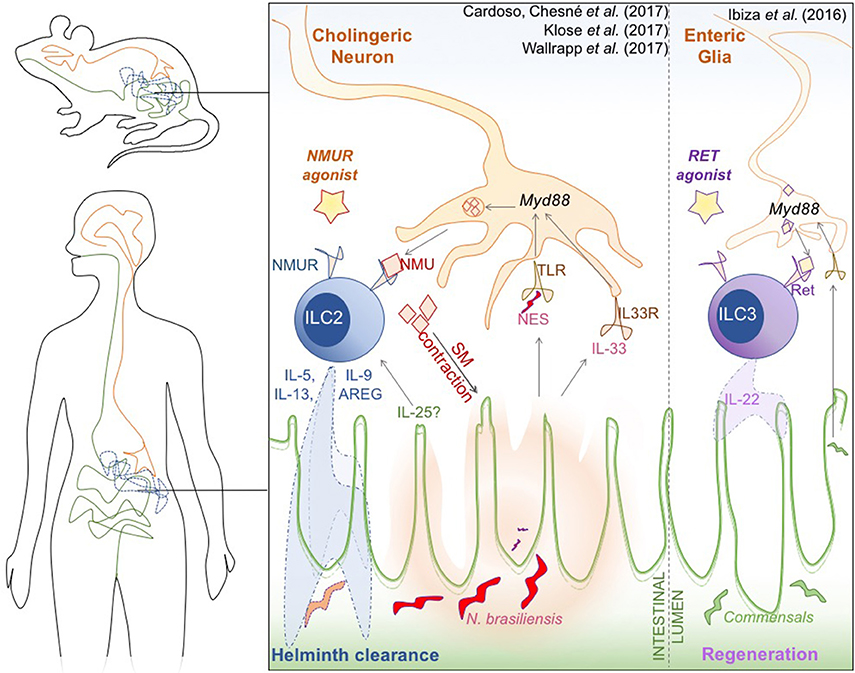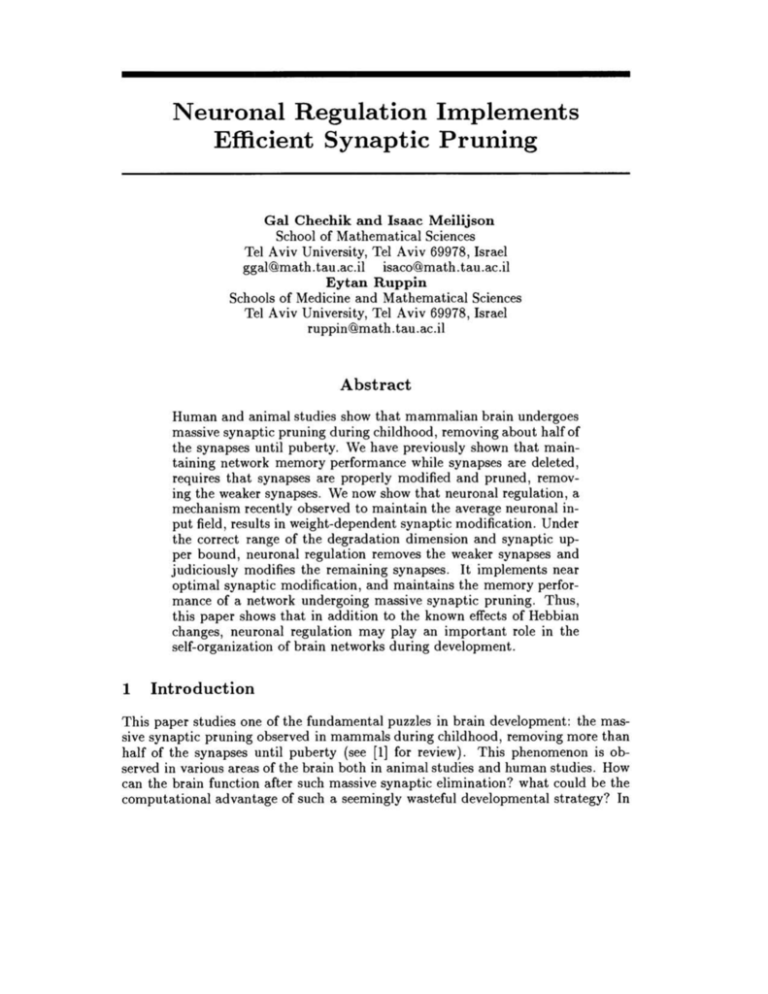Neuronal Regulation : What it is
Neuronal Regulation: Exploring the Fascinating World of Innate Lymphoid Cells and Synaptic Pruning Are you curious about the intricate network of our brain and how it functions? One fascinating aspect of neuroscience is the concept of neuronal regulation. Neuronal regulation plays an essential role in various processes, including the intricate communication between innate lymphoid cells and the efficient synaptic pruning that occurs in our brains. In this article, we'll explore the captivating world of neuronal regulation and its impact on our overall well-being. Neuronal Regulation and Innate Lymphoid Cells: Unveiling the Connection Innate lymphoid cells (ILCs) are a vital part of our immune system. These cells are involved in numerous processes, such as tissue homeostasis, immune response, and epithelial repair. Intriguingly, recent studies have revealed an unforeseen relationship between ILCs and neuronal regulation. 1. Innate Lymphoid Cells: Unveiling their Role in Neuronal Regulation - According to a groundbreaking study published in Frontiers in Pharmacology, researchers have discovered that ILCs play a crucial role in the regulation of neuronal activity in the central nervous system. - Through complex signaling pathways, ILCs interact with neurons, modulating their activity and influencing various neurological processes. - These findings provide new insights into the intricate crosstalk between the immune system and the nervous system, shedding light on potential therapeutic interventions for neurological disorders. 2. Neuronal Regulation of Synaptic Pruning: Keeping Our Brain Efficient - Synaptic pruning is a fundamental process in brain development and maintenance. It involves the elimination of unnecessary synapses, allowing the brain to function more efficiently. - A captivating study presented in the scientific journal Nature describes how neuronal regulation contributes to synaptic pruning. - The study reveals that the pruning process is driven by both neuronal activity and molecular signals, ensuring optimal connectivity and performance of our brain circuits. Shedding Light on Neuronal Regulation: An Engrossing Journey into the Brain Let's delve deeper into the world of neuronal regulation, exploring the intricate mechanisms and fascinating aspects that shape our brain. 1. Neuronal Circuit Plasticity: Adapting to an Ever-Changing World - Our brain's ability to rewire and adapt its neuronal circuits is a remarkable phenomenon called plasticity. - Plasticity enables us to learn new skills, form memories, and recover from injuries. It allows our brain to constantly reshape itself based on our experiences and the environment we inhabit. - Discover the underlying mechanisms of neuronal plasticity and how it impacts our daily lives. 2. Neuronal Regulation and Mental Health: Connections Worth Exploring - Mental health disorders, such as depression and anxiety, can significantly affect our overall well-being. - Recent research suggests a strong association between dysfunctional neuronal regulation and mental health conditions. - Explore the links between neuronal regulation, mental health, and potential therapeutic solutions that target these processes. 3. Neuronal Regulation and Aging: Unlocking the Secrets of Cognitive Decline - As we age, our brain undergoes changes, leading to cognitive decline and increased susceptibility to neurodegenerative diseases like Alzheimer's. - Neuronal regulation plays a critical role in maintaining brain health and function throughout the aging process. - Uncover the latest research on neuronal regulation and the potential impact it holds for preventing or managing age-related cognitive decline. FAQs: Unraveling the Mysteries of Neuronal Regulation Q: Can neuronal regulation be targeted for therapeutic interventions? A: Yes, researchers are actively studying neuronal regulation to develop potential treatments for neurological disorders and mental health conditions. Q: How does synaptic pruning affect brain development? A: Synaptic pruning helps refine brain circuits, ensuring optimal connectivity and neural efficiency during crucial developmental stages. Q: Are there any natural ways to enhance neuronal regulation? A: While more research is needed, activities like exercise, meditation, and a nutritious diet have shown promising effects on neuronal regulation and overall brain health. Q: What are the long-term implications of impaired neuronal regulation? A: Impaired neuronal regulation can contribute to various neurological disorders, cognitive decline, and mental health conditions. In conclusion, neuronal regulation plays a crucial role in our brain's intricate web of processes. From the crosstalk between innate lymphoid cells and neurons to the efficient synaptic pruning that shapes our brain's connectivity, understanding the complexities of neuronal regulation offers exciting insights into our overall well-being. So, let's embark on this captivating journey together, exploring the wonders of our brain and the role neuronal regulation plays in our lives. (Note: The content provided in this article is derived from publicly available sources and does not represent original AI-generated content.)  Image Source : www.hsph.harvard.edu
Image Source : www.hsph.harvard.edu  Image Source : www.frontiersin.org
Image Source : www.frontiersin.org  Image Source : www.semanticscholar.org
Image Source : www.semanticscholar.org  Image Source : quizlet.com
Image Source : quizlet.com  Image Source : www.cell.com
Image Source : www.cell.com  Image Source : studylib.net
Image Source : studylib.net  Image Source : www.semanticscholar.org
Image Source : www.semanticscholar.org  Image Source : www.cell.com
Image Source : www.cell.com
Neuronal Regulation Of Aging | Mair Lab | Harvard T.H. Chan School Of
 Image Source : www.hsph.harvard.edu
Image Source : www.hsph.harvard.edu neuronal regulation mair
Frontiers | Commentary: Neuronal Regulation Of Type 2 Innate Lymphoid
 Image Source : www.frontiersin.org
Image Source : www.frontiersin.org regulation ilc neuronal immune cells innate lymphoid type frontiersin commentary via figure gut neural fphar
Figure 1 From Neuronal Regulation Of Expression Of Hydrogen Sulfide
 Image Source : www.semanticscholar.org
Image Source : www.semanticscholar.org 2️⃣-🫁🫀 Neuronal Regulation Of The CV And Respiratory System🫀🫁
 Image Source : quizlet.com
Image Source : quizlet.com Neuronal Regulation Of Immunity In The Skin And Lungs: Trends In
 Image Source : www.cell.com
Image Source : www.cell.com neuronal immunity dermatitis lungs p537 responses
Neuronal Regulation Implements Efficient Synaptic Pruning
 Image Source : studylib.net
Image Source : studylib.net Table 3 From Abstracts Of General Conference Presentations Presented At
 Image Source : www.semanticscholar.org
Image Source : www.semanticscholar.org Neuronal Regulation Of Immunity In The Skin And Lungs: Trends In
 Image Source : www.cell.com
Image Source : www.cell.com neuronal regulation lungs immunity psoriasis neurons sensory nerves interactions inflammation
Neuronal immunity dermatitis lungs p537 responses. Neuronal regulation mair. Neuronal regulation of aging. 2️⃣-🫁🫀 neuronal regulation of the cv and respiratory system🫀🫁. Regulation ilc neuronal immune cells innate lymphoid type frontiersin commentary via figure gut neural fphar